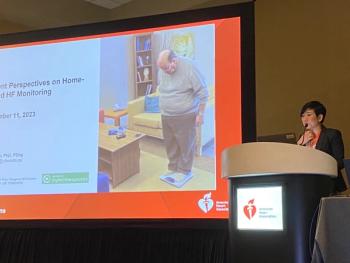
Interpretation services help providers find the right words
Each non-English-speaking person who walks through the door represents a potential malpractice suit.
COMMUNICATION is a vital link in medical assessment and treatment, connecting medical experts with their patients in an exchange of information that becomes the backbone of accurate diagnosis, meticulous treatment compliance and complication aversion. When that link is fragile or non-existent, the end result can be disastrous-for patients who suffer harm, for medical staff who are unable to deliver quality healthcare, and for hospitals and medical practices that may be liable under federal requirements for language accessibility.
According to the 2000 Census, more than 21 million individuals have limited English proficiency-a number that grows with each wave of immigration, both legal and illegal. More than a dozen non-English languages are spoken extensively in different parts of the country, and literally hundreds of languages are present in large metropolitan areas like New York City, Los Angeles and Chicago.
For a hospital, which typically has a cross-section of the community in the waiting room, the language diversity is challenging from both a practical and legal standpoint. No institution can afford to hire in-house linguistic experts to cover all languages, yet each non-English-speaking person who walks through the door represents a potential malpractice suit.
CONTRACT STREAMLINES PROCESS One solution for hospitals is to establish a contract with an interpreting service that offers a full range of language expertise for both spoken and written communication needs. The benefits of a contract include easy accessibility, consistent quality, reduced cost and documented regulatory compliance.
Accessibility. A contract provides a one-stop access point for obtaining interpreters. No one has to remember that Jose in X-ray is from Puerto Rico, Marika in the pharmacy has a working knowledge of Japanese, and Thuy in the front office understands both Vietnamese and Hmong-or worry that they are not on the work schedule at the precise moment an interpreter is needed. Instead, a hospital calls one source to provide interpreters onsite or over the telephone. For emergencies, a telephone interpreter can be connected to a doctor and patient within minutes. When scheduled ahead, an onsite interpreter can calm difficult situations, working in close collaboration with the patient and medical staff.
Quality. A skilled interpreter is more than someone who, like Jose, Marika or Thuy, is presumed to have certain language skills. Quality interpreting requires that the interpreter know both the language and culture, so that nuances are not lost and idiomatic phrases are understood. The interpreter should also follow proper protocol, interpreting not only the precise words but also the accurate tenor and tone of dialogue.
In addition, an interpreter should be trained in the medical language that is normal in the hospital setting. A conversational grasp of a language will not be adequate to explain symptoms well, interpret the medical phrases that are integral to diagnosis and treatment, and provide clarity to both patients and doctors.
Costs. A contract provides a standardized and economical approach to identifying costs that is tied to volume of use. An assessment of the value of a contract should include reduced lost-opportunity costs, such as the savings when Jose, Marika or Thuy are no longer pulled away from their normal duties to provide on-the-spot interpreting.
In addition, there are risk-management savings when malpractice litigation stemming from miscommunication errors is avoided.
Regulatory compliance. Federal laws and regulations require hospitals to offer services that do not discriminate against people with limited English proficiency. In addition, HIPAA and other regulations protect patient privacy. An interpretation contract with a company that maintains signed confidentiality agreements with individual interpreters documents the good-faith efforts of hospitals to comply fully with government regulations.
SERVICES AT WORK
The University of Maryland Medical Center (UMMC) includes some of the 15 hospitals in the United States that have contracted with an onsite interpretation provider that provides onsite or telephonic interpreters 90,000 times a year in more than 250 languages.
Newsletter
Get the latest industry news, event updates, and more from Managed healthcare Executive.






















































